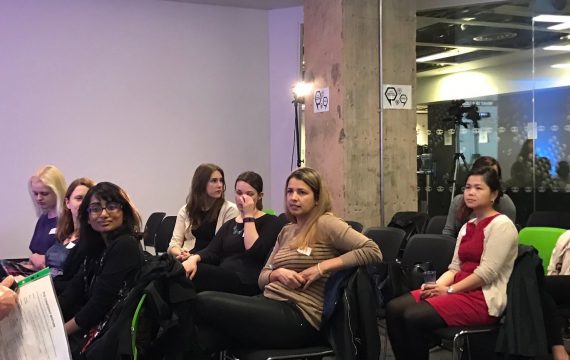With the news that the government remains cautious about deciding whether to end all Covid restrictions in England on 21 June, we are all eagerly awaiting details of the next stage out of lockdown.
Every day there’s another story about the havoc being wreaked in the wake of Covid-19.
And every week, a new report is published on how Covid-19 is having a negative impact on women and their careers which means that the gender pay gap will widen.
While we all recognise that women are over-represented in the hardest hit sectors such as hospitality, leisure and retail which have been shut down for long periods of time, across all sectors, women are more likely to be trying to balance full-time working and for several months full-time home-schooling.
This means that women were more likely to have requested furlough, holiday or unpaid leave so they could home-school (reported by the Women and Work All Party Parliamentary Group) despite their worries that this would put their careers on hold and that they’d ultimately pay the price by missing out on promotion opportunities.
Indeed, many women decided to quit the workforce altogether, rather than risk complete burnout.
All of this will contribute to widening, not closing, your gender pay gap.
On the other hand, we’ve experienced more workplace flexibility than we might ever have imagined.
We’ve seen that remote working really does work BUT there is a danger that the continuance of remote working in the future will widen the gender pay gap?
In September last year CIPD published a report on new ways of working post- pandemic which showed that 40% of employers expect more than half their workforce to work regularly from home after the pandemic has ended.
Heralding the ‘flexible working’ of the future
We’re seeing a flurry of ‘flexible working’ announcements from forward-thinking employers:
- For example, the Bank of Ireland UK has said it will establish “hubs” to allow staff to use desks and attend meetings.
- Professional services firm KPMG has told its 16,000 staff they can leave early one day a week as part of a move towards more flexible working after lockdown.
- EY told its 17,000 staff that the accountancy firm will move to a “hybrid working model”, mixing work in the home and the office and that staff will be expected to work from home for at least two days a week.
While we’ve all been working from home, it didn’t matter where you were based. We’ve all been equally remote and, therefore, equally visible.
However, from the research, we know that those more likely to want to work from home more often are people with disabilities, parents of young children and women.
There is a big danger here.
If more women than men take up the option of remote working, women will become even less visible in the workplace.
Visibility at work is a critical factor for career progress.
Less visibility will lead to women being less likely to get a promotion and the accompanying pay rise which means that your gender pay gap will widen as a result.
However as an organisation you can have a positive influence on the long-term effects of the pandemic on your female talent (and therefore your gender pay gap) by:
- raising awareness of how communication and behaviour at work affects how you are likely to be perceived by co-workers and senior management
- teaching how to get more visible so employees make a bigger impact in the workplace even if working regularly from home
- educating your female talent how to appreciate their unique strengths, so they can clearly articulate their skills, ambitions and value to the business
- communicating the importance of setting and maintaining clear boundaries, so your female talent doesn’t start to burn out and ultimately quit
- supporting your promising female leadership talent to build career support networks so they feel less isolated which means they are more likely to put themselves forward for promotion
- submitting your gender pay gap report before 5 October when enforcement action starts so that you have the data you need to monitor the impact of Covid-19 on your gender pay gap.
You can help to ensure that your female talent knows HOW and WHY to stay visible, even if working from home in a variety of ways e.g. workshops, lunch ‘n’ learns or a leadership development programme.
Women In Technology Leadership programme
Running a leadership development programme sends a powerful message that clearly communicates your organisation’s awareness of the impact of Covid-19 on women’s careers and demonstrates your commitment to gender diversity and female talent development.
You may not have the resources or bandwidth in-house to design, develop and deliver a leadership development programme and that’s why I’d like to tell you about my Women In Technology Leadership programme which starts on Monday 28 June.
The Women in Technology Leadership programme has been designed specifically for women working in technology, a traditionally male-dominated environment.
It offers structured blended learning which incorporates 1:1 coaching, group calls and access to online tools and resources so that participants develop their leadership, communication and negotiation skills, build their resilience, grow in emotional intelligence and self-awareness so that your female talent knows HOW to remain visible, even if working remotely, which means that you avoid the negative impact of hybrid working on your gender pay gap.
Get in touch today to book an exploratory call about the Women In Technology Leadership programme.
















